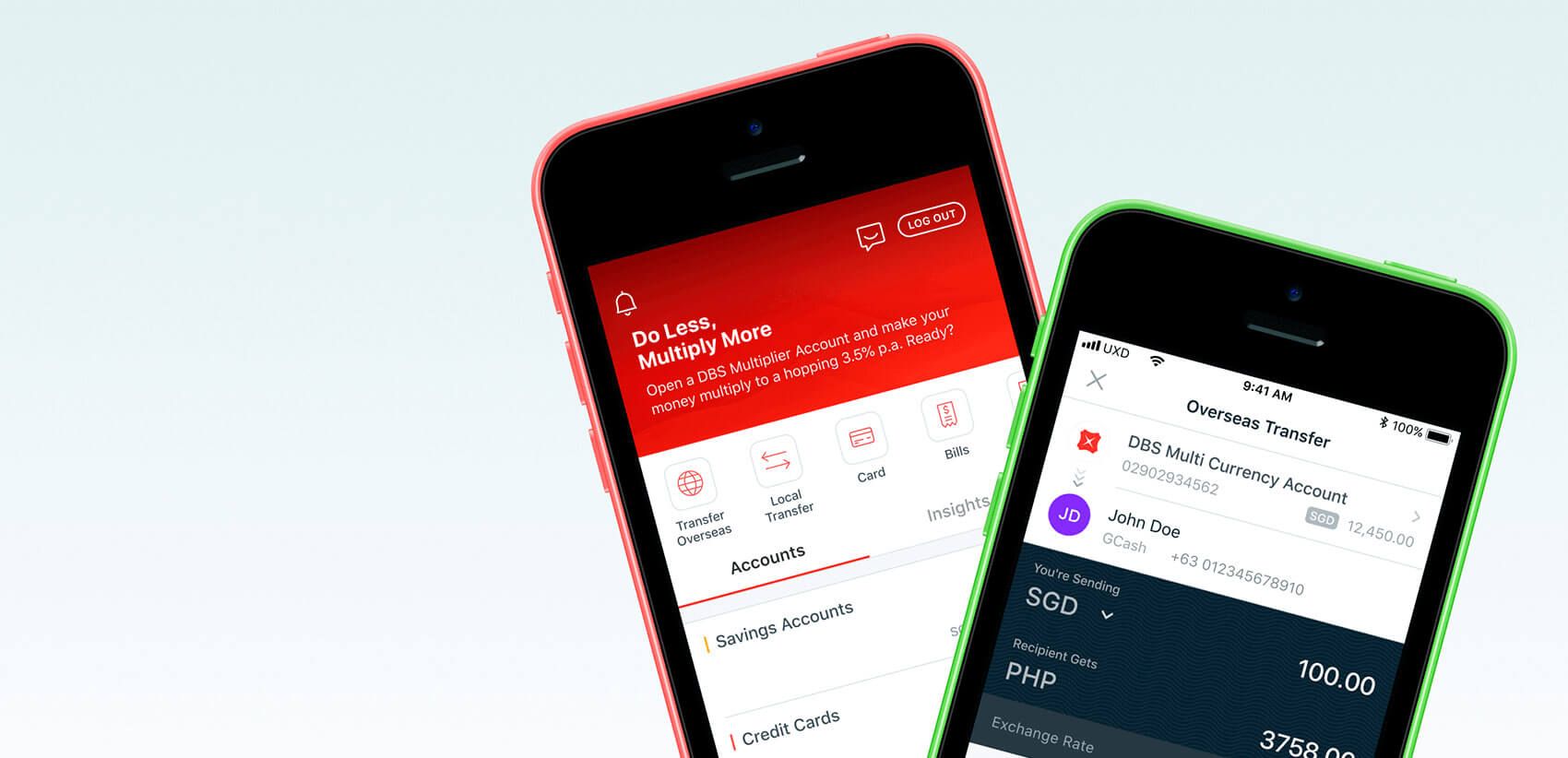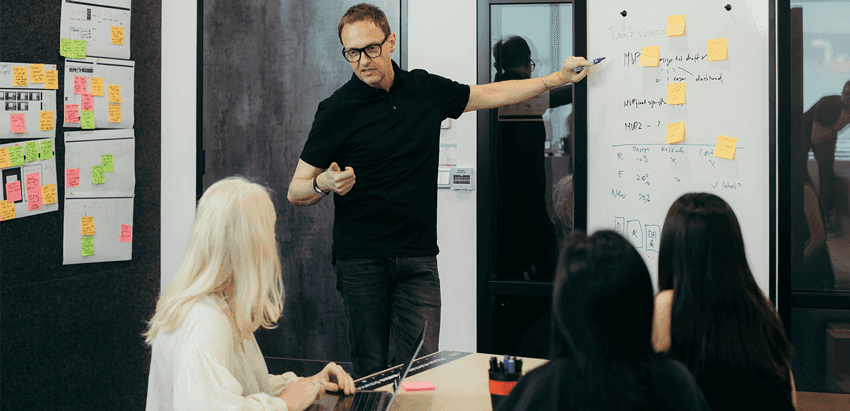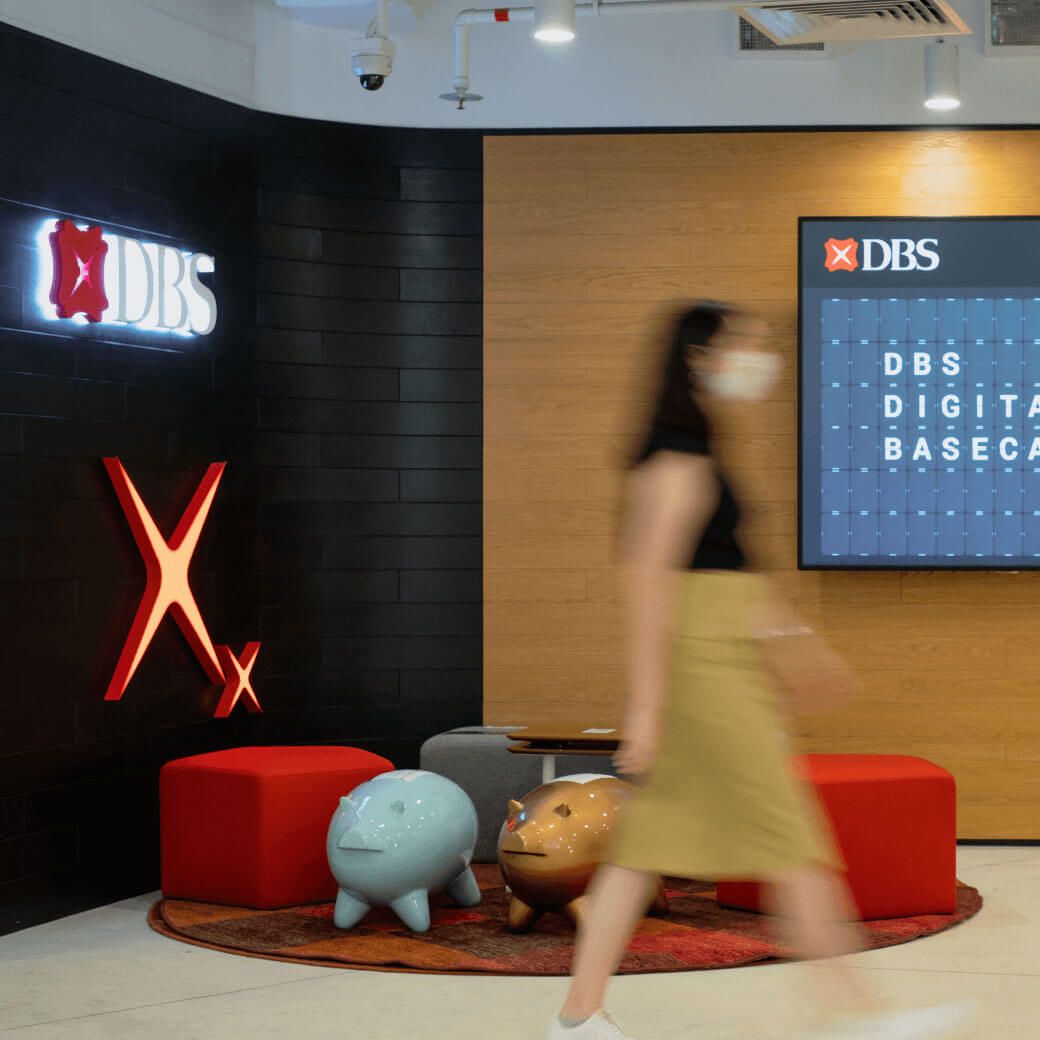DBS – Live more, Bank less
DBS Bank, headquartered and listed in Singapore, is one of the largest banks in Southeast Asia. Its 29,000+ employees provide corporate banking services in over 18 markets, and also serve the consumer markets in Singapore, China, Indonesia, India, Taiwan and Hong Kong.
Recognised as the World's Best Bank for 3 consecutive years, DBS is focused on providing a seamless, secure, customer-centric experience that makes banking intelligent, intuitive, invisible and inclusive. Hence, the slogan – Live more, Bank less.
As such, customer experience is always at the centre of attention. All banking solutions need to be simple and convenient. Localisation contributes to this goal by providing an accessible experience tailored to customers in different regions.

Challenges
DBS localises its consumer banking, wealth management and other app content modules in Chinese and English for consumers in Singapore, China, Taiwan and Hong Kong. However, it goes beyond just two languages, with regional variations playing a part, e.g. Traditional Chinese for Hong Kong, and Simplified Chinese for China and Singapore.
1. Dividing responsibilities
Every localisation team is different. For DBS, the key localisation team members include content creators, product owners and engineers. Product owners are the ones responsible for translating the content as well, explains Liva:
“Our product team members are the owners of the different financial products DBS offers. The teams that own particular financial services will also be the ones that do the translations because they know their product best and what content they want”.
With industry complexities and no systematic workflow, localisation used to be a time-consuming process that required a lot of effort. Liva's original role was that of a UX writer. Having had prior experience with Translation Management Systems (TMS), Liva saw the benefits a TMS solution like Lokalise could bring to her line of work. However, this required change management and involved a strict approval process:
“Introducing any new tool is difficult because banks are very risk-averse. We had to go through a lot of internal reviews”, Liva reveals.
2. The challenge of decentralised localisation
Previously, the DBS localisation workflow was onerous, with information scattered over various communication channels and documents:
During development, we constantly had to try to figure out what the correct and final version of the translated copy was. Content was scattered across Word documents, Excel files, emails, Teams messages, etc.
“During development, we constantly had to try to figure out what the correct and final version of the translated copy was. Content was scattered across Word documents, Excel files, emails, Teams messages, etc.”
In addition, designers and writers lacked the necessary context for their work, often producing content in a Word document that ultimately would not fit the design.
Here, developers were closely involved in the localisation process. They had to devote considerable efforts to finding the final versions and implementing the changes. Needless to say, a lot of resources were being wasted. These tasks were rarely a priority for developers since their main focus was on app functionalities. This is why content updates often ended up in the backlog, further slowing down the release process.
Testing also came with its challenges. Before discovering the branching feature in Lokalise, there was no structured way of updating the content for already developed features. Testers would constantly get confused trying to understand what the right copy was and where it came from.

At DBS, product owners are the final decision-makers when it comes to what content our customers will see. So it makes sense to empower them to change content without having to always go through developers. Lokalise enables us to do that.
“At DBS, product owners are the final decision-makers when it comes to what content our customers will see. So it makes sense to empower them to change content without having to always go through developers. Lokalise enables us to do that”.
Solutions
1. Single source of truth for localisation
By implementing Lokalise, DBS got a single localisation tool that keeps all stakeholders aligned. Today, responsibilities are divided much better, and this positively impacts both the quality of the localised content and the speed of development.
What was previously an environment prone to errors became a unified workspace thanks to Lokalise. When you structure responsibilities in the localisation process, the end results improve.
2. Branching for better localisation and approval process
Branching has been particularly handy for DBS as it allows the team to work freely with existing content and merge it afterwards, avoiding confusion about versions among developers and testers. Liva tells us:
“When we are done preparing keys for the upcoming sprint, we create a task. If we need to update some content that has been developed before, we do branches”.
In addition, there’s another crucial benefit of branching for DBS:
As a financial institution, DBS is very strict with content approvals and the clearance process can be lengthy. On top of that, not all teams involved in the approval process work in sprints. This means that edits and approvals can often come after a feature has been developed and tested. Branching allows them to make changes to already developed content easily.
The risk-adversness typical of banks and other institutions that hold safety and security above all else, entails a long sign-off process with various stakeholders required to give their stamp of approval on any changes. DBS also uses custom translation statuses to make “passed approval” stages for translations.
Conveniently, Lokalise allows the team to open a new branch and let their copywriters or translators make changes in that branch. Only when fully approved and reviewed by all stakeholders are changes implemented through the branch merge. This is how everyone stays on the same page regarding the latest updates.
3. Figma plugin provides much-needed context
The Figma plugin also played an important role in the DBS localisation process.
With the help of the Figma plugin, the workflow has become much smoother. Issues with text not fitting or disappearing in endless email threads were reduced. It became easy for writers and developers to see what key is used for what element. There is no more confusion about which are the latest versions.
With all these features and integrations combined, Lokalise has helped improve the efficiency of the localisation process. It has enabled the DBS team to preserve brand consistency across different regions:
If we have done user research and user testing in one country and we know that the flow and language work, the stakeholders from other countries can open Lokalise to see what language and terminology were used. This provides much more visibility for everyone.
“If we have done user research and user testing in one country and we know that the flow and language work, the stakeholders from other countries can open Lokalise to see what language and terminology were used. This provides much more visibility for everyone”.
Results
“After introducing Lokalise, localisation-related bugs fell from 30% to below 8%. Bear in mind that this is not a bank-wide metric but tied to the two projects we worked on”.
After introducing Lokalise, localisation-related bugs fell from 30% to below 8%. Bear in mind that this is not a bank-wide metric but tied to the two projects we worked on.
Now, with Lokalise, DBS has a more complete overview of every corner of their app. The team can enjoy a single source of truth for their localised content and collaborate seamlessly with fewer bugs emerging. Approval is managed effectively thanks to branching.
The biggest benefit? Lokalise makes it a lot easier for DBS to create relevant, localised user experiences for global customers and build trust by bridging the language barrier.
In the end, Lokalise proved to be a valuable investment because it has managed to serve DBS as a single source of truth for localisation.
Read more case studies

ESL Gaming shortens time to market with a centralized approach to translation

How to manage more than 30 apps in 15 languages without stress and mistakes
Case studies

Behind the scenes of localization with one of Europe’s leading digital health providers
Read more Case studies
Support
Company
Localization workflow for your web and mobile apps, games and digital content.
©2017-2026
All Rights Reserved.


